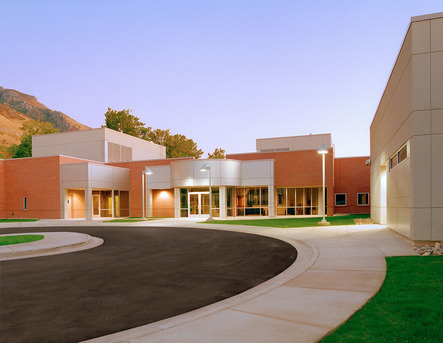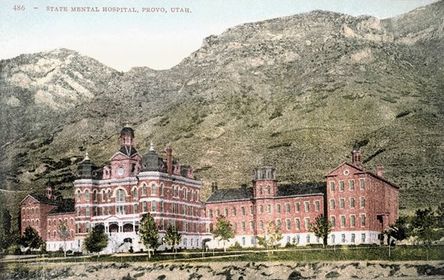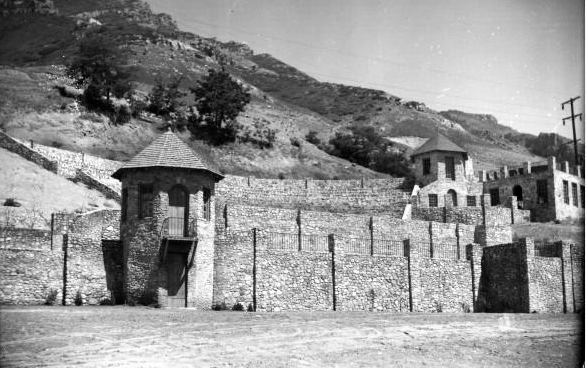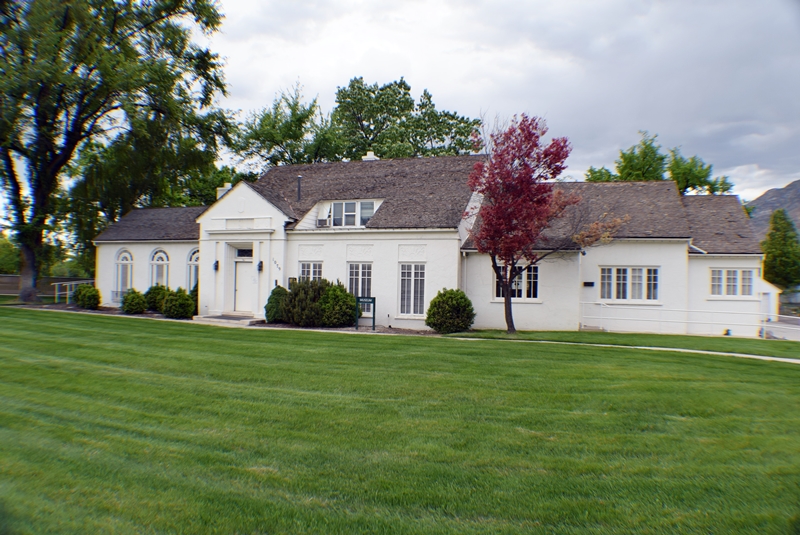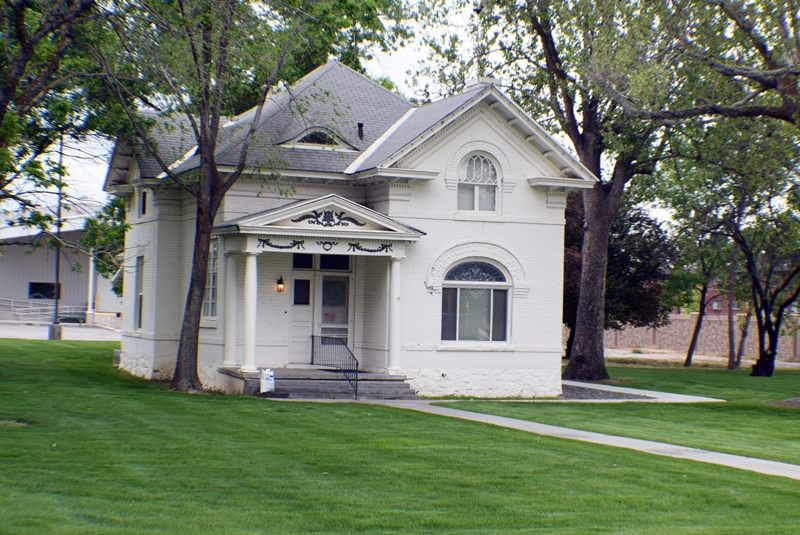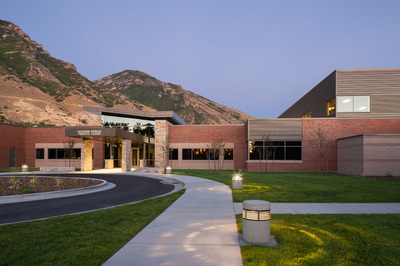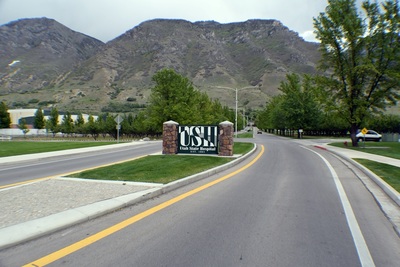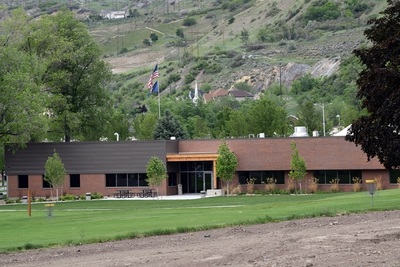Utah State Hospital - Provo, UT
|
Utah State Hospital
1300 East Center Street Provo, Utah 84606 (801) 344-4400 Utah State Hospital Utah State Hospital serves citizens from the entire state of Utah under the direction of the Utah Department of Human Services and Division of Substance Abuse and Mental Health. They provide treatment to individuals with Severe Mental Illness who are referred from the 11 Community Mental Health Centers operated throughout the state. They also provide Pediatric Services for children ages 6 - 18; Adults ages 18 and above as well as Forensic patients committed for mental health treatment through the Judicial Courts. Today the Hospital provides 324 beds for Utah's mentally ill citizens who require treatment in a more structured setting. Treatment is provided to patients ranging from age six years to geriatric age. Specialized programs are offered for children, adolescents, forensic and adult resident. |
Utah State Hospital History
|
For decades after colonists settled Provo in 1849, the Utah County Court (now called the County Commission) supervised the care of those in the county who suffered from extreme poverty, mental deficiency, or mental illness.Residents of the community submitted bids to the County Court for the care of these people. The justices then assigned the care of these disadvantaged individuals to the lowest bidder.
|
The Utah Territorial Legislature passed a bill authorizing the establishment of the Utah Territorial insane Asylum in 1880. This new institution's Board of Directors, which included two former members of the Provo City Council, became responsible for choosing a site for the asylum.
Utah, Salt Lake, and Davis counties actively campaigned to become the site of the new institution. In an effort to sway the opinion of the Board of Directors, Provo City offered the asylum's Board $500 and Utah County offered another $2.000 to help buy the necessary land for the new buildings. With this inducement in mind, the Board chose Provo as the site of the asylum. A four-man committee selected the location for the new buildings in the foothills east of the end of Provo's Center Street where a good spring flowed from the mountain. The money from the city and county paid for the initial 40 acres of land. There was one major difficulty with the site: no road existed between the location of the future buildings and the east end of Center Street. The Provo City Council negotiated with landowners, bought the right-of-way, and extended Center Street to the Asylum grounds. Construction workers finished the south wing of the new building in 1885. It housed the first 200 Patients. Utah Parks and Recreation |
|
The Milton Hardy Building
Constructed in 1908 and demolished in 1967. Named after Dr. Milton Hardy, who was the Hospital Superintendent at the time of construction. |
The George Hyde Building
Constructed in 1921 and demolished in 2004. Named after George Hyde, who was the hospital superintendent at the time of construction. |
The Utah State Hospital Castle
|
Provo Castle and Amphitheater
The Provo Castle is a beautiful building surrounded by a nice park, pond, and mini golf course. The Castle was built during the 1930's as part of the Works Progress Administration (WPA). They built it as a source recreation and entertainment for patients at the Utah State hospital. It is included on the National Register of Historic Places. The castle amphitheater on the Utah State Hospital grounds in Provo was once converted into a haunted castle every October by its patients. The haunted castle originated as a Halloween party for the hospital, but became so popular the hospital made into a fundraising activity in 1971. Patients were the actors in the attraction, and all money raised went to the hospital’s recreation fund. The $100,000 raised over several nights is used to finance outings such as camping trips. Twenty-six years later, the haunted castle was forced to close. The National Alliance on Mental Illness said using mental illness patients as actors in a haunted attraction was offensive to those who have a mental illness. While the haunted castle will never be done again, it has not been forgotten. |
|
Utah State Hospital Museum
First building on the north side of the street as you enter the hospital. 1300 East Center St. Provo, UT 801-344-4254 or 385-277-0289
The Utah State Hospital Museum tells the hospital's 120-year history through photos and artifacts displayed in two rooms at the historic Old Superintendent's Home. |
The museum's exhibit provides a window into the history of mental-health treatment. Visitors can see straitjackets and other restraint devices used during the last 100 years to control or restrain patients. A Utica crib, essentially an adult-size bed with bars and a lid, and a tranquilizer chair used to hold and sedate patients, provide vivid examples of how far mental-health treatment has progressed in the past 70 years. Both the crib and the chair were used to treat the manic aspect of bipolar disorder before experts understood the condition.
It is said implements and devices were used by staff at the hospital who thought they were doing their best for the patients. The hospital staff members weren't mean but merely followed the accepted mental-health practices of the time.
It is said implements and devices were used by staff at the hospital who thought they were doing their best for the patients. The hospital staff members weren't mean but merely followed the accepted mental-health practices of the time.
Call, Text, or Email Denise Martin to Buy or Sell a Provo Home
Denise Martin (801) 602-9552 | Team@HomeRealty.com
Denise Martin (801) 602-9552 | Team@HomeRealty.com
Realtors in Provo Utah
View Orem Utah Guide
Search Town Homes in Provo for Sale Search Twin Homes in Provo for Sale Search Condos in Provo for Sale Search Town Homes in Orem for Sale Search Twin Homes in Orem for Sale Search Condos in Orem for Sale |
Real Estate Search in Provo |
